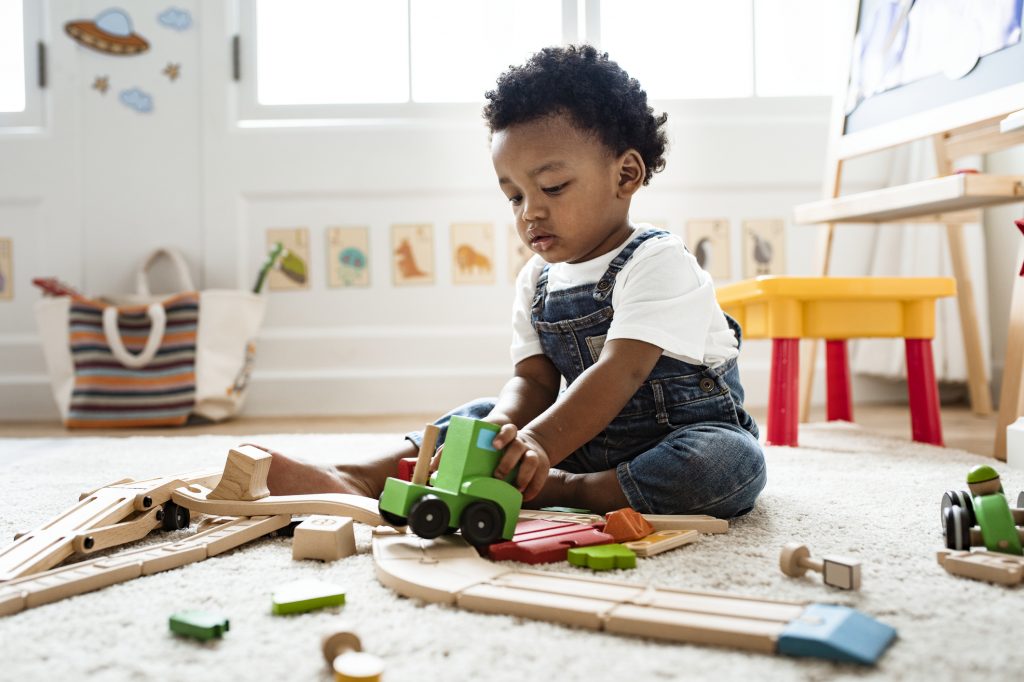Children go through different phases of play, depending on their stage of growth and development
Play is such a natural part of childhood that we don’t fully realize its developmental implications. While skilled caregivers recognize that playing is an important part of learning and exploring, it’s often less obvious that children go through different phases of play that are dependent on their age range. Understanding the various stages of play can help caregivers design learning activities that have an educational impact on children of all ages.
Appropriate playtime
The categories of play were developed in the 1930s by M.B. Parten to recognize that children interact with toys and each other in different ways as they grow. Each child is an individual, and as such, plays differently, but the stages of play are similar to other developmental milestones in representing an accurate commonality between ages. Learning more about the stages of play can help caregivers design activities and experiences that utilize age-appropriate play styles to maximize learning opportunities.
Unoccupied play
Newborns don’t appear to be playing at all. They remain relatively stationary, and their movements don’t appear to have a purpose. However, babies are beginning to form connections with the caregivers during this stage, and early interactions can assist with bonding. Singing, rocking, tummy time, or playing with brightly colored rattles are all appropriate activities that can help with important developmental skills.
Solitary play
During this stage, children play independently. They prefer playing alone, aren’t interested in sharing a toy or activity, and may seem uninterested or unaware of what others are doing. Solitary play is important because it helps children learn how to entertain themselves; it’s also common at a young age where cognitive, social, and physical skills are progressing.
Play at this phase involves exploring the world through their senses and includes looking, touching, grasping, and tasting. They’re also developing motor skills and spatial awareness; showing increased awareness and understanding of how their body fits and interacts with its surroundings. Playing peek-a-boo or giving them opportunities to explore cause and effect – such as dropping and picking up a toy – are good activities for this stage.
Parallel play
As toddlers begin to discover their new physical skills and abilities, they continue to enjoy playing independently but begin to see themselves as part of a social group. However, they’re still self-centered in their interactions and thinking.
During this phase, children may play next to each other with the same toy or activity. However, they’re not necessarily exchanging ideas, conversing, or playing together. Encourage social activities that bring kids together such as Ring Around the Rosie or playing together but separately with building blocks or musical instruments to help them see the value of making friends and participating in collaborative efforts.
Associative play
Children eventually begin to develop an interest in other children and will start to play the same game without necessarily working together. Although they still have limited interaction in playing together, they like to watch and imitate their peers, and often participate in the same activity. Playing dress-up, using the same playground equipment, or sharing a play kitchen are good examples of associative play activities; each child has their own focus but may be talking to each other and using the same toys to carry that out.
Cooperative play
When two or more children talk to each other and work together to play, pretend, or create, they’ve entered the phase of cooperative play. This is an important stage of social and emotional development and teaches them how to compromise, resolve conflict, and regulate emotions. Encourage children to play in groups for short periods in organized activities with clearly defined rules or roles, such as sports or board games.
Although they may have different stages and styles of doing it, children love to play. Use this natural instinct and interest to guide them through the various phases of play in a way that helps optimize their potential for growth and development.
The Virginia Infant & Toddler Specialist Network helps improve the quality of care for infants and toddlers through extensive resources, services, and education for caregivers. Learn more about how we can help you improve the standard of care.




